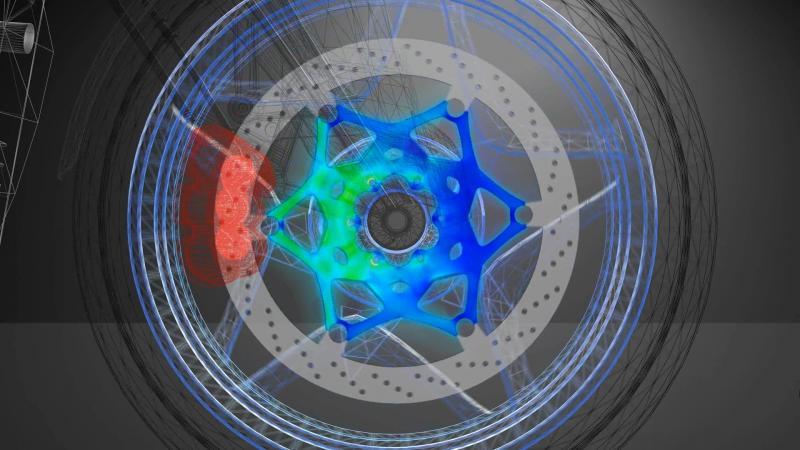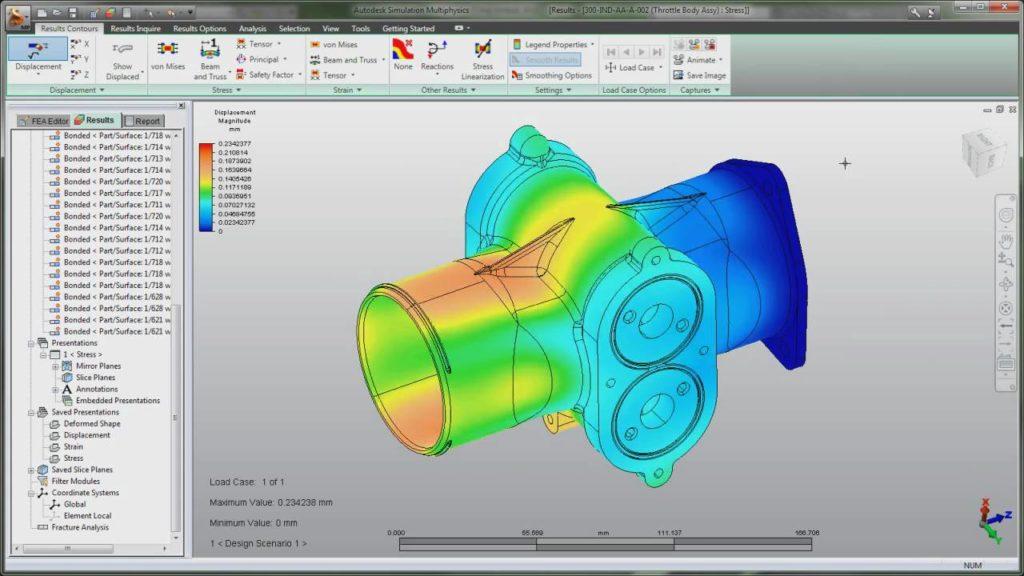New Technologies Require New Testing Mechanisms: Manufacturers to Rely on 3D Simulation Software More in the Future
 While it’s true that there have been a multitude of highly publicized, rather non-essential innovations created in 3D print, the technology truly does offer a venue for scientists, engineers, and designers around the world to create with greater impact than ever. 3D technology offers a host of benefits that simply can’t be refuted, and many manufacturers don’t want to pass them up as they envision high-quality components that can be customized at will, manufactured more expediently, and with savings shaved off that ever challenging bottom line. Items that were not possible before can now be made in-house, designed by those who will use them on a daily basis, as in programs at hospitals where makerspaces allow nurses to create innovations like kid-friendly dermatological tools.
While it’s true that there have been a multitude of highly publicized, rather non-essential innovations created in 3D print, the technology truly does offer a venue for scientists, engineers, and designers around the world to create with greater impact than ever. 3D technology offers a host of benefits that simply can’t be refuted, and many manufacturers don’t want to pass them up as they envision high-quality components that can be customized at will, manufactured more expediently, and with savings shaved off that ever challenging bottom line. Items that were not possible before can now be made in-house, designed by those who will use them on a daily basis, as in programs at hospitals where makerspaces allow nurses to create innovations like kid-friendly dermatological tools.
Lately though, a couple of different themes keep popping up in the 3D industry, from the inception of 3D printed simulation and training tools for professionals, making sure they are skilled at their craft, to quality assurance technology for big corporations who can put the dollars into making sure their 3D printed products don’t fail, checked up on at every turn before they leave the factory or warehouse. While 3D technology has for so long been responsible for allowing innovators to make products, now it’s going to be responsible for the production of tools that allow us to check up not just on professionals and their skill levels, or QA at the end, but something in the middle too: testing to see if a product is feasible at all—and if so, assessing its integrity.
 While the benefits of faster manufacturing and greater affordability accompany 3D printing, so generally does ‘higher quality,’ and with that said, manufacturers certainly don’t want to fall down on the job with new processes certainly capable of impressing both new and old customers. It’s crucial to enjoy the perks of what technology has to offer while making sure that the product being presented to the consumer is sound and doesn’t fail once in their hands. Simulation software can assure they are striking the correct balance between budget and functionality.
While the benefits of faster manufacturing and greater affordability accompany 3D printing, so generally does ‘higher quality,’ and with that said, manufacturers certainly don’t want to fall down on the job with new processes certainly capable of impressing both new and old customers. It’s crucial to enjoy the perks of what technology has to offer while making sure that the product being presented to the consumer is sound and doesn’t fail once in their hands. Simulation software can assure they are striking the correct balance between budget and functionality.
Companies like Dassault Systèmes have been able to offer this type of platform through 3DExperience, which operates on numerous levels for users and not just for corporations—it’s even available to entire governments. The platform can evaluate the performance of products while checking numerous features from reliability to safety.
“Premature failure not only drives warranty costs up – it also has the potential to decimate a company’s hard-earned reputation for quality,” explains David Barnes, Senior Director of SIMULIA, a product powered by Dassault Systèmes 3DEXPERIENCE platform.
As progress marches on, many traditional products and processes are being replaced by technology still considered to be unconventional. That calls for progressive new quality assurance methods such as 3D simulation software that offers a virtual design context.
“The methods of trial and error, physical prototyping, and commissioning are often too slow, too costly, and incapable of keeping pace with the opportunities and risks that some of these larger macro trends present. Simulation capabilities will play an essential role in helping companies successfully navigate these risks and secure additional market value,” noted Greg Fallon, Vice President of Simulation, Autodesk Product Development.
No longer a futuristic method of testing left to pilots and astronauts, simulation is available and it’s obviously a win for companies that are ready to move up a notch in quality control. The ones who do are the same manufacturers and corporations already reaching out to additive manufacturing and other new processes on that much talked about cutting edge.
“Simulation provides much more comprehensive feedback on the design, allowing the engineer to understand things such as failure margins, load paths, the impact of tolerances on performance, and allows a quick efficient exploration of the complete design space to identify the ideal design,” says Barnes.
“Multi-physics simulations that combine computational fluid dynamics with finite element analysis are now commonplace and eliminate the need to guess at the loading of a structure interacting with fluids or to estimate heat transfer coefficients.”

A motorcycle rotor undergoes a validation test using SIMULIA Abaqus simulation software [Image: Dassault Systemes]
“Coupling system influences and interactions with application and environmental conditions is a key aspect of understanding and predicting the ever expanding demands on product performance,” says Fallon.
The technology is here, and now it’s just a question of seeing it integrated to a more mainstream client base, such as that of the computer-aided engineering (CAE) market.
“The fact is that for the first time, CAE can begin to live up to the aspirations of the ‘E’ in its acronym,” said Fallon. “With new solutions that focus on ease of use, improved solution interaction, and visualization – not to mention readily available computational power, collaboration, and mobile access via the cloud – simulation is evolving to be an integral part of the product design and manufacturing process.”
Looking at this from the Dassault Systèmes 3DExperience angle, Barnes says that we should expect to see three trends in the market. First, democratization will be put right into the hands of the person who should be testing: the engineer. This allows for better collaboration during product management and cohesion for all working together. Second, exploration in design will be led by automation and integration. The resulting tools will allow for optimized algorithms, sometimes producing unexpected designs that work better overall. And last, Barnes predicts that 3D printing and additive manufacturing will play a much larger role, but through using simulation first, companies can be assured that the products they are getting ready to manufacture at whatever scale are of the proper geometry and can be made efficiently.
“The result of all of these changes and the shift to cloud-based platforms should be improved simplicity, broadened access, interconnected and automated capabilities, as well as the inclusion of big data and artificial intelligence to actively take part in the development of revolutionary products,” said Fallon.
While simulation technology is there and growing, and manufacturers will quickly catch on to its benefit, there is also a learning curve involved for those will be using it, as well as some adapting required. Quite simply, everyone will need to continue to evolve, as will prices and other benefits like cloud-based subscriptions, one example offering a good start. Discuss further in the 3D Simulation Software forum over at 3DPB.com.
[Source: Product Design & Development]Subscribe to Our Email Newsletter
Stay up-to-date on all the latest news from the 3D printing industry and receive information and offers from third party vendors.
You May Also Like
3D Printing News Briefs, April 13, 2024: Robotics, Orthotics, & Hypersonics
In 3D Printing News Briefs today, we’re focusing first on robotics, as Carnegie Mellon University’s new Robotics Innovation Center will house several community outreach programs, and Ugogo3D is now working...
Rail Giant Alstom Saves $15M with 3D Printing Automation Software 3D Spark
3D Spark has entered into a three-year deal with the rail giant Alstom. Alstom, a transport behemoth with annual revenues of $16 billion, specializes in the manufacture of trains, trams,...
Meltio Expands Global Reach with New Partnerships in the Americas and Europe
Spanish 3D printing manufacturer Meltio has expanded its sales network across the globe. With the addition of three new partners in the United States, Brazil, Argentina, and Italy, Meltio aims...
3D Printing Webinar and Event Roundup: April 7, 2024
Webinars and events in the 3D printing industry are picking back up this week! Sea-Air-Space is coming to Maryland, and SAE International is sponsoring a 3D Systems webinar about 3D...
































